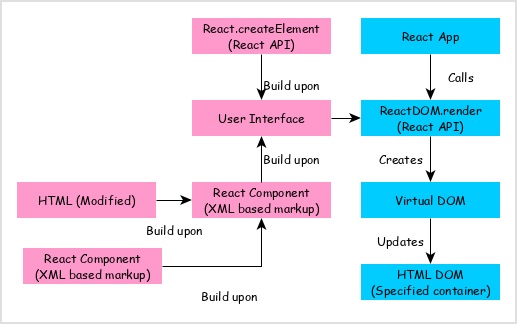Getting Started with React JS

ReactJS is a JavaScript library that is used for building user interfaces.
ReactJS is a wicked cool library that developers use to build user interfaces for web and mobile apps. It was created by Facebook and is super popular these days.
One of the best things about React is that you can just declare what you want to see on the screen and it takes care of the rest. Plus, it's component-based, which means that you can break down the UI into smaller reusable pieces of code, making it easier to manage big projects.
Why would we need React JS instead of plain Javascript?
Great question! While plain JavaScript can be used to create dynamic user interfaces, ReactJS offers a number of advantages that can make development faster, easier, and more efficient.
First and foremost, ReactJS is component-based, which means that you can break down the UI into smaller, reusable pieces of code. This can make it easier to manage complex projects and create reusable code that can be used across multiple projects. With plain JavaScript, you would need to manually manage the UI elements and update them as needed, which can be time-consuming and error-prone.
Here's an example "App.js" file with five components:
import React from 'react'; import Header from './components/Header'; import Content from './components/Content'; import Sidebar from './components/Sidebar'; import Footer from './components/Footer'; import './App.css'; function App() { return ( <div> <Header /> <div className="container"> <Content /> <Sidebar /> </div> <Footer /> </div> ); } export default App;
ReactJS also uses a virtual DOM, which makes updates to the UI faster and more efficient. Instead of updating the actual DOM every time there's a change, React updates an in-memory representation of the DOM and then applies the changes to the actual DOM. This can lead to faster load times and a smoother user experience.
Another benefit of ReactJS is that it uses a declarative approach, which means that developers just declare what they want to see on the screen and let React take care of the rest. This can make development faster and more efficient, since developers don't have to worry about the nitty-gritty details of updating the UI.
Finally, ReactJS offers strong support for testing, which can make it easier to write testable code and catch bugs early on in the development process. This can help save time and prevent issues down the road.
While plain JavaScript can certainly be used to create dynamic user interfaces, ReactJS offers a number of benefits that can make development faster, easier, and more efficient.

Here are some of the key features of ReactJS:
- Declarative Approach
- Virtual DOM
- Component-Based Architecture
- Unidirectional Data Flow
- Much More
Declarative Approach
... More content ...